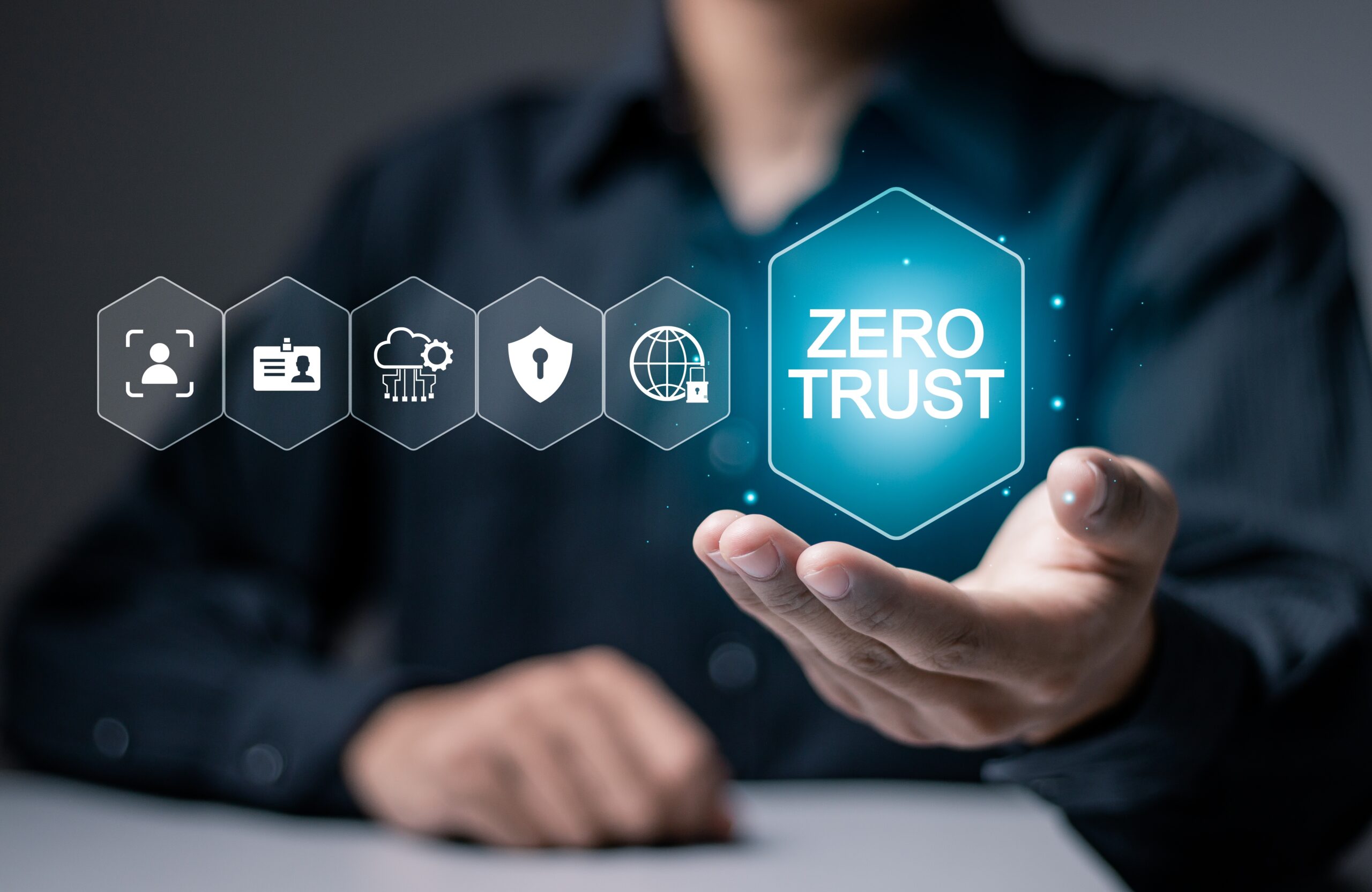In today’s rapidly evolving digital landscape, traditional security measures are proving inadequate in protecting sensitive information and critical infrastructure. The Zero Trust Security Model has emerged as a robust solution, addressing contemporary cybersecurity challenges by fundamentally changing how we approach security.
What is Zero Trust?
Zero Trust is a security framework that operates on the principle of “never trust, always verify.” Unlike traditional models that assume everything inside an organization’s network can be trusted, Zero Trust requires continuous verification of every user and device attempting to access resources. This paradigm shift significantly enhances security by minimising the risk of unauthorised access and data breaches.
The Core Principles of Zero Trust
1. Verify Explicitly: Always authenticate and authorise based on all available data points, including user identity, location, device health, service or workload, data classification, and anomalies.
2. Use Least Privilege Access: Limit user access with just-in-time and just-enough-access (JIT/JEA), risk-based adaptive policies, and data protection to ensure users only have the access they need.
3. Assume Breach: Assume that any network may be compromised and act accordingly. Segment access by network, user, device, and application. Use end-to-end encryption to ensure data security.
Industry Perspectives on Zero Trust
Microsoft: Microsoft’s approach to Zero Trust focuses on integrated security across identities, endpoints, applications, infrastructure, and network. According to Microsoft, the Zero Trust model provides a comprehensive security strategy by leveraging real-time insights and adaptive controls. Microsoft’s Zero Trust framework is built on three guiding principles: verify explicitly, use least privileged access, and assume breach.
Gartner: Gartner emphasizes that Zero Trust is not a single technology but a strategic initiative that helps prevent data breaches by eliminating the concept of trust from an organization’s network architecture. Gartner advises organizations to adopt a continuous adaptive risk and trust assessment (CARTA) mindset, ensuring security measures dynamically adjust to the context and environment.
Palo Alto Networks: Palo Alto Networks defines Zero Trust as an approach that relies on strict identity verification for every person and device trying to access resources on a private network. They stress the importance of granular, context-based policies and real-time threat intelligence to enforce Zero Trust principles effectively. Palo Alto Networks’ Zero Trust model includes continuous monitoring and validation, ensuring that security adapts to the evolving threat landscape.
Practical Examples of Zero Trust in Action
1. Multi-Factor Authentication (MFA): An employee accessing the company’s cloud services must use MFA, providing a password and a one-time code sent to their mobile device. This ensures that even if a password is compromised, unauthorized access is prevented.
2. Micro-Segmentation: A financial institution implements micro-segmentation in its data center. Each application and workload is isolated, and access is strictly controlled. If a breach occurs in one segment, it doesn’t spread to others, containing the threat.
3. Conditional Access Policies: A global enterprise enforces conditional access policies that grant or deny access based on user location, device compliance status, and risk level. For instance, access to sensitive data might be restricted if an employee logs in from an unrecognized device or unusual location.
4. Endpoint Security: A company deploys endpoint detection and response (EDR) solutions to continuously monitor and analyze endpoint activities. Any anomalies or suspicious behavior triggers an automated response to isolate the affected device and mitigate potential threats.
5. Data Encryption: An organization uses end-to-end encryption for data in transit and at rest. This ensures that even if intercepted, the data remains unreadable without the proper decryption keys.
Implementing Zero Trust
1. Identify Assets and Sensitive Data: Understand what needs protection and classify assets based on sensitivity and risk.
2. Map the Transaction Flows: Document how data moves across your network and identify the key interaction points that need protection.
3. Create a Zero Trust Architecture: Develop a strategy that includes micro-segmentation, multi-factor authentication (MFA), and endpoint security to enforce the Zero Trust principles.
4. Continuous Monitoring and Response: Implement monitoring tools to detect anomalies and respond to potential threats in real-time.
Benefits of Zero Trust
– Enhanced Security Posture: By continuously verifying all access attempts, Zero Trust reduces the risk of internal and external threats.
– Minimised Damage from Breaches: Micro-segmentation and least privilege access help contain breaches and limit their impact.
– Compliance and Governance: Zero Trust aligns with many regulatory requirements and improves an organisation’s ability to manage compliance.
Conclusion
The Zero Trust Security Model is transforming how organizations protect their digital environments. By adhering to the principles of “never trust, always verify,” organizations can build a robust defense against the sophisticated cyber threats of today. As leaders like Microsoft, Gartner, and Palo Alto Networks advocate, embracing Zero Trust is not just a technical shift but a strategic imperative for any modern enterprise.
At Ybrant Solutions our Zero Trust approach is based on a set of principles and pillars. Each organization must have a Zero Trust policy in place. It is a journey that each organization needs to embark on to secure their assets.
If you are a CISO, Security Architect, IdAM process owner, we have a solution for you. Here’s what we offer for CISO.
—
References:
1. Microsoft Zero Trust: Microsoft Security
2. Gartner Zero Trust: Gartner Research
3. Palo Alto Networks Zero Trust: Palo Alto Networks




